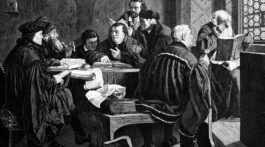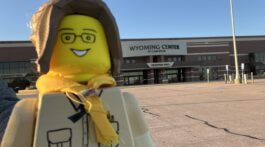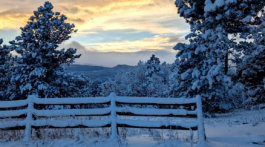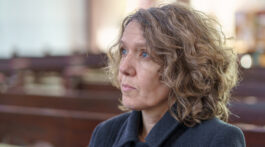A Preview of the End on the Road to India
Cool air from the limestone cave gently surged outward, providing some relief to the crowd sitting in the humid heat of a southern Illinois summer. Before them stood a charming, white-haired man with a twinkle in his eyes, and a lilt in his voice as he addressed us. “Imagine,” he said, “wouldn’t it be wonderful to hear a sermon on the Second Coming by Peter? Because Peter had a preview of the Second Coming at what we call the Transfiguration!” He beamed at us, his dark eyes sparkling. “Well I’m going to talk to you about the end of the world,” he said, “because I had a preview of the end of the world when, as a young missionary, I fled with thousands of others from the Japanese invasion of Burma.”
Eric B. Hare then proceeded to tell us the riveting story of his headlong flight, along with people all social standing, all financial circumstances, toward and then across a mountain path that ended in relative safety in what was then India (today’s Bangladesh). He told of how, reduced to what each could carry, this mass of people voluntarily separated into two groups, one devout and prayerful every evening, and the other selfish, boastful, and profane. “That’s how the sheep and the goats come to be separated at the end time,” he told us. “They separate voluntarily like oil and water.” I heard that sermon nearly 50 years ago, and I can still remember whole paragraphs. He had indeed seen a preview of the end of the world.
Of course, not everyone who went on that trip recognized the significance. G.K .Chesterton wrote, “A traveler sees what he sees. A tourist sees what he went to see.” Despite the dramatic circumstances, most probably made that trip as tourists — they saw what they expected to see. Many saw only hardship, fear, and inconvenience, and some blocked out the painful experience and probably remembered almost nothing at all. But Eric B. Hare saw a preview of the end of the world.
The 2020 Journey
Our most recent journey around the sun, the year 2020, has been a remarkable trip. Many believe they may have witnessed a preview of the end of the world.
Many made the trip only as tourists, and saw their own end-time scenarios confirmed. Unfortunately, this is happened often before. Some saw the end of the world — and not just a preview, mind you — in World War II. Some saw it with the deepening of the Cold War. In relatively recent memory, many anticipated the end 20 years ago, in the dreaded event dubbed “Y2K.”
Reactions to the pandemic, and to the measures introduced to combat it are far too varied for me to say that I have seen or could identify the sheep and the goats. While I believe I have seen is much more subtle, much more diffuse, and challenging not “them” or “us,” but rather each individual, each denomination, each congregation, and even each family.
When the allies successfully invaded North Africa in 1943, Winston Churchill wanted the citizens of the Allied powers to understand that the operation had been a success, but there was much more fighting to come. For the first time, the allies demonstrated that they could not only hold off the Axis war machine, but actually defeated and drive it back. In many ways, the battle to liberate Europe had just begun. But finally all the pieces were in place to make that outcome a possibility. He put it this way: “Now this is not the end. It is not even the beginning of the end. But it is, perhaps, the end of the beginning.”
Not the End?
That is what I believe I saw in 2020. Not the end, nor the beginning of the end. Perhaps not even the end of the beginning. But I may have perceived a large piece beginning to move into place.










